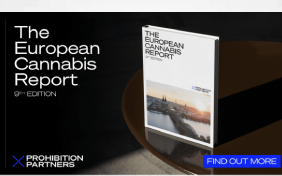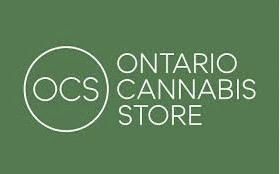The Oregon Liquor Control Commission (OLCC) recently finalized new administrative rules on Delta-8 THC and other artificially derived cannabinoids as directed by HB 3000 (2021). These rules were long-awaited because, as described in our earlier blog post covering the OLCC rules advisory committee (RAC) meeting, the original proposed rules were essentially a blanket ban on all artificially derived cannabinoid products in OLCC’s regulated cannabis system. As this blog post will explain, the new administrative rules will allow for some artificially derived cannabinoids in limited circumstances to be produced and transferred by OLCC licensees and sold at OLCC dispensaries. These rules do not apply to industrial hemp licensees who legally operate outside of OLCC’s regulated cannabis market – the below rules apply only to OLCC licensees.
Delta-8 THC and other Artificially Derived Cannabinoids
A major consideration of HB 3000 was dealing with Delta-8 THC and other artificially derived cannabinoids that were previously outside the purview of OLCC enforcement powers. The new administrative rules do not list out specific artificially derived cannabinoids that are now banned. Rather, the definition of artificially derived cannabinoids bans products from the OLCC adult-use cannabis market based on how they are produced.
“Artificially derived cannabinoids” are defined under the new rules as “a chemical substance that is created by a chemical reaction that changes the molecular structure of any chemical substance derived from the plant Cannabis family Cannabaceae” (OAR 845-025-1015(3)(a)). Pursuant to the new administrative rules, the definition of artificially derived cannabinoid does not include:
(A) A naturally occurring chemical substance that is separated from the plant Cannabis family Cannabaceae by a chemical or mechanical extraction process;
(B) Cannabinoids that are produced by decarboxylation from a naturally occurring cannabinoid acid without the use of a chemical catalyst; or
(C) Any other chemical substance identified by the commission, in consultation with the authority [Oregon Health Authority (OHA)] and the department [Oregon Department of Agriculture (ODA)], by rule (OAR 845-025-1015(3)(b)).
Artificially Derived Cannabinoids Allowed in SOME Situations
Products that meet the definition of artificially derived cannabinoids are banned unless they can meet the three-step approval process laid out in the new administrative rule (OAR 845-025-1310(1)).
FIRST, the artificially derived cannabinoid:
(A) Is not a controlled substance under OAR Chapter 855, Division 80;
(B) Was manufactured in a food establishment licensed by the ODA in compliance with the applicable provisions of OAR chapter 603, division 21, division 24, division 25, and division 28;
(C) Was manufactured by a processor or an ODA Hemp Handler;
(D) In the Commission’s judgment, is not impairing or intoxicating; and
(E) Has been reported as a naturally-occurring component of the plant Cannabis family Cannabaceae in at least three peer-reviewed publications; (OAR 845-025-1310(1)(a)).
SECOND, the artificially derived cannabinoid product is not intended for human inhalation (OAR 845-025-1310(1)(b)).
THIRD, the manufacturer of the artificially derived cannabinoid:
(A) Has made a “Generally Recognized as Safe” (GRAS) determination for the artificial cannabinoid and supplied a copy of that determination to the Commission;
(B) Has provided to the Commission a Food and Drug Administration (FDA) letter responding to a “Generally Recognized as Safe” (GRAS) notice for the artificially derived cannabinoid manufactured by the same method that the manufacturer uses, affirming that FDA has no questions about the notice; or
(C) Has provided to the Commission an FDA letter of acknowledgement with no objections in response to a New Dietary Ingredient notification for the artificially derived cannabinoid manufactured by the same method that the manufacturer uses (OAR 845-025-1310(1)(c)).
This section lays out three ways a manufacturer can establish that an artificially derived cannabinoid is GRAS. First, a manufacturer can make an independent GRAS conclusion by determining a substance is generally recognized, “among experts qualified by scientific training and experience to evaluate its safety.” This creates an exception to the premarket approval requirement for “food additives” under the Federal Food, Drug, and Cosmetic Act. Independent GRAS determination must be based on a level of scientific agreement about a substance’s safety, or for a substance used in food before January 1, 1958, on scientific procedures or common use in food. It is very unlikely that a qualified expert would determine that an artificial cannabinoid would be safe in food, because of the dearth of legitimate studies into cannabis in food.
Second, a manufacturer could submit a GRAS notice to the FDA asserting that the artificially derived cannabinoid is safe, receive a letter from the FDA affirming the GRAS notice, and provide that letter to the Commission. A GRAS notification, in part, should include a description of the identity and method of manufacture, specifications, physical or technical effect of the substance, estimation of dietary exposure, and supporting data and information. 21 CFR 170.230, 170.235, and 170.255. The FDA has affirmed three GRAS notices for hemp seed-derived ingredients for use in human food. However, the FDA has not made any such determination for any cannabinoids, artificial or otherwise. When it comes to CBD derived from hemp, the FDA has determined that because CBD has been approved a drug (i.e., Epidiolex), it cannot be added to food or marketed as a dietary supplement.
Third, a manufacturer could provide the Commission with an FDA notice that the artificially derived cannabinoid has been acknowledged by the FDA as a New Dietary Ingredient (NDI). Unlike food, where each additive must be submitted to the FDA for premarket approval (unless an independent GRAS determination is made legitimately) NDIs included in dietary supplements need not be approved by the FDA but a manufacturer distributing NDIs must notify the FDA 75 days before introducing the product to interstate commerce. As stated above, the FDA has determined that CBD cannot be an NDI because it has been approved as a drug.
It is not impossible that an artificial cannabinoid manufacturer could meet on of the requirements of OAR 845-025-1310(1)(c), but it is unlikely given the FDA’s resistance in allowing CBD to be added to food or dietary supplements. But, if an artificially derived cannabinoid has not been investigated as a drug the FDA may not be nearly as resistant. Of the three ways to satisfy OAR 845-025-1310(1)(c), the NDI pathway seems the most promising. However, establishing that an artificial cannabinoid is GRAS or a legitimate NDI will be a steep hurdle for Oregon stakeholders wishing to manufacture artificial cannabinoids.
At the RAC hearing regarding Delta-8 and other artificially derived cannabinoids, industry advocates described the then proposed rules as a blanket ban that would inhibit industry growth and experimentation in Oregon. The OLCC responded with concerns about unknown side effects and shortfalls in testing these novel products. The OLCC appears to believe a fair compromise is allowing for the transfer of artificially derived cannabinoids, but only when the OLCC is satisfied the product is non-intoxicating and there is some documentation that the product was tested and is safe. While this is not a completely unfair position, it does seem to be inconsistent with Oregon’s overall policy when it comes to cannabis. Oregon has legalized marijuana and allowed THC and other cannabinoids to be sold in food, even though THC has not been acknowledged as GRAS or as an NDI. In addition, Oregon has allowed the sale of hemp-derived CBD, despite the FDA’s position on CBD. Despite this history, the OLCC now seems ready to rely on a federal agency with regards to artificial cannabinoids. Understandably, stakeholders are having a hard time making sense of what very well could result in a complete ban on the sales of artificially derived cannabinoids.
CBN
The fate of CBN was probably the most important concern for industry advocates. CBN is a very popular artificially derived cannabinoid, and is often added to nighttime edibles as a sleep aid. Given the product’s popularity, its promise as a sleep remedy to prescription drugs, and fact that CBN has not been approved as a drug, CBN may be a good candidate as an NDI.
Regardless of whether or not CBN qualifies as an NDI, under the finalized rules, a licensee may, until July 1, 2023, transfer, sell, transport, purchase, possess, accept, return, or receive any marijuana or hemp item containing CBN if the item is not intended for human inhalation, and the artificially derived cannabinoid:
(A) Is not a controlled substance under OAR Chapter 855, Division 80;
(B) Was manufactured in a food establishment licensed by the ODA in compliance with the applicable provisions of OAR chapter 603, division 21, division 24, division 25, and division 28; and
(C) Was manufactured by a processor or an ODA Hemp Handler (OAR 845-025-1310(3)(b)).
Sell-Down Period for Artificially Derived Cannabinoids
Licensees have until July 1, 2022, to sell off their current inventory of product containing artificially derived cannabinoids. However, Licensees can only transfer products containing artificially derived cannabinoids when:
(a) The artificially derived cannabinoids were manufactured by a processor or received by a licensee from a Commission-certified hemp handler before January 1, 2022;
(b) The manufacturing process did not involve treating a marijuana item or hemp item with an additive or substance that increased the potency; and
(c) The item otherwise complies with these [administrative] rules (OAR 845-025-1310(4)).
Labeling Artificially Derived Cannabinoids
Beginning July 1, 2022, the following labeling requirements are required for items containing artificially derived cannabinoids that are approved by the OLCC:
(1) In addition to the requirements of OAR 845-025-7000 through 845-025-7190, the product identity must clearly identify that the product contains an artificially derived cannabinoid and must include the words “artificially derived cannabinoid.”
(2) If these rules require the label for the marijuana or hemp item to list the ingredients, the ingredient listing must identify any artificially derived cannabinoid by its full name and use the words “artificially derived” in the description of the specific ingredient (OAR 845-025-7145).
Additionally, the packaging and labeling applications submitted to the OLCC for products containing artificially derived cannabinoids approved by the OLCC must include:
(i) The applicable documentation required by OAR 845-025-1310(1);
(ii) A copy of the food establishment license issued by the Oregon Department of Agriculture (ODA) to the manufacturer of the artificially derived cannabinoid; and
(iii) In a form and manner prescribed by the Commission, citations to the peer reviewed studies as required by OAR 845-025-1310(1), and attestation by the licensee of the accuracy of the information submitted for label pre-approval (OAR 845-025-7160(2)(b)(D)).
You can contact Brett Mulligan at info@gl-lg.com or 503-488-5424.

















